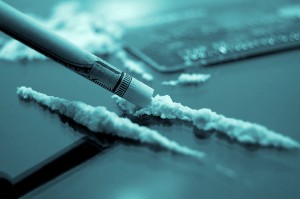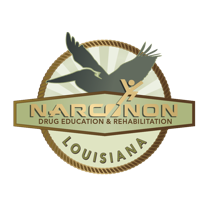FActs About Cocaine
Facts about Cocaine
 Cocaine is a psychoactive, toxic, and addictive substance that has major psychological and physiological consequences for addicts. What is even more unfortunate and alarming are the negative effects cocaine has on the addict’s family, community, place of work, and society in general. Random acts of violence and domestic violence are often fueled by cocaine. Children are often the main victims of abuse from cocaine addicts; either suffering via prenatal exposure or parental abuse.
Cocaine is a psychoactive, toxic, and addictive substance that has major psychological and physiological consequences for addicts. What is even more unfortunate and alarming are the negative effects cocaine has on the addict’s family, community, place of work, and society in general. Random acts of violence and domestic violence are often fueled by cocaine. Children are often the main victims of abuse from cocaine addicts; either suffering via prenatal exposure or parental abuse.
Cocaine is one of the most powerful central nervous system (CNS) stimulants found in nature. In today’s society, cocaine is most often associated with the music industry, Hollywood, celebrities, and middle to upper class society. It is most often seen in the white, crystalline powder form called cocaine hydrochloride. This product comes from the extraction of leaves from the coca plant which is indigenous to the highlands of the Andean Mountains of South America. The Incas originally used coca leaves as part of their religious rites thousands of years ago. As centuries passed, laborers of the Andes experienced harsh working conditions and toiled under these restrictions. They would often chew the coca leaves or brew a tea out of it to relieve apoxia or mountain sickness due to the high elevations, fatigue, hunger, and for energy.
In modern society and modern science, cocaine was first isolated from the coca leaf in the late 1800s. It soon became an active ingredient in many patent medications around the world like tonics, throat lozenges, and as a topical solution for numbing pain. Cocaine was also the main ingredient in Coca Cola which separated it from all other fountain drinks. It was a common elixir for colds and was a remedy for giving people a quick boost of energy. Obviously the Coca Cola we find today does not contain cocaine but that is how the way the name came about. Soon after medicines containing cocaine hit the market, cases of addiction, psychotic behavior, convulsions, and death began occurring in America. A series of steps including the Pure Food and Drug Act of 1906 came into play to combat health and behavioral problems associated with cocaine and other drugs like Morphine and Heroin. The Harrison Act of 1914 was then activated to outlaw the use of cocaine and opiates like morphine and heroin in over the counter medications and ultimately making these types of medications available only with a certified doctor’s prescription. Soon after this act, the use of cocaine and its effects dropped to minimal levels for nearly half a century. It then continued as a local anesthetic for the nose, eyes, and throat surgery.
However in the 1960s, cocaine saw a huge rebound in interest to the public. Although very expensive at about $100 per gram, powder cocaine had become the popular drug of choice for middle and upper class Americans by the late 1970s. People had forgotten about the dangers of cocaine from generations past and from the epidemic it caused in the early 1900s. By the 1980s, cocaine had become rampant and widespread as physiological and psychological problems began occurring in people abusing the drug. By the early to mid 80s, cocaine had turned into crack cocaine, a smokable, rapidly reacting form of powder cocaine which is processed from cocaine hydrochloride. It is often seen as an off white chip, rock, or chunk. Drug dealers needed to find a new market. They were only tapping into those that had money and leaving a huge majority of the people out. So to expand the user base, drug dealers and traffickers created a new method that lowered the price of the drug but made it more addictive. Since it is smoked rather than snorted, the rush or high from crack cocaine is immediate as it absorbs through the blood vessels in the lungs.
Crack cocaine swept the urban communities as soon as it hit the streets. Several factors attributed to its fast acceptance and success. First of all, crack cocaine is extremely cheap and affordable. This gained an entire new market of people who originally could not afford the $100 per gram price tag of powder cocaine. Second, crack cocaine is very easy to use since it is smoked through a glass pipe. And finally, the effects of crack cocaine are fast and immediate. Smoking crack cocaine gives addicts a euphoric high that is twice as fast as powder cocaine. Because of the rapid high one gets, crack becomes more addicting quicker than snorting. These reasons have made crack cocaine a highly profitable and marketable product.
Cocaine causes an increase in blood pressure and heart rate and also constricts blood vessels. This causes a demand for more blood supply in the body and organs. But due to the blood vessel constriction, it causes cardiovascular problems and strokes in people. At higher doses of cocaine, a person becomes delusional, paranoid, and can even suffer acute toxic psychosis. Blood pressure becomes elevated which can lead to heart attacks and strokes. As the drug leaves the body, a person can then feel like they’re crashing causing depression, fatigue, fearfulness, and anxiety.
There is a very broad range of consequences from using powder and crack cocaine. They include the following:
- For intravenous (IV) cocaine users, there is an increased risk of hepatitis, HIV infection, and endocarditis
- For addicts, whether they smoke, inject, or snort, promiscuous sexual activity can increase their risk of HIV infection
- Fetal cocaine effects include premature separation of the placenta, spontaneous abortion, premature labor, low birth weight and head circumference at birth, greater chance of visual impairment, mental retardation, genitourinary malformations, and greater chance of developmental problems
- Psychiatric complications which includes psychosis, paranoia, depression, anxiety disorders, and delusions
- Other effects include: sleeplessness, sexual dysfunction, diminished sense of smell, perforated nasal septum, nausea, and headaches
- Cardiovascular problems, including irregular heartbeat, heart attack, and heart failure
- Neurological incidents, including strokes, seizures, hemorrhaging in tissue surrounding the brain
- Pulmonary effects, such as fluid in the lungs, aggravation of asthma and other lung disorders, and respiratory failure
Since its beginning Narconon has witnessed the rise of crack cocaine and its damaging side effects.
